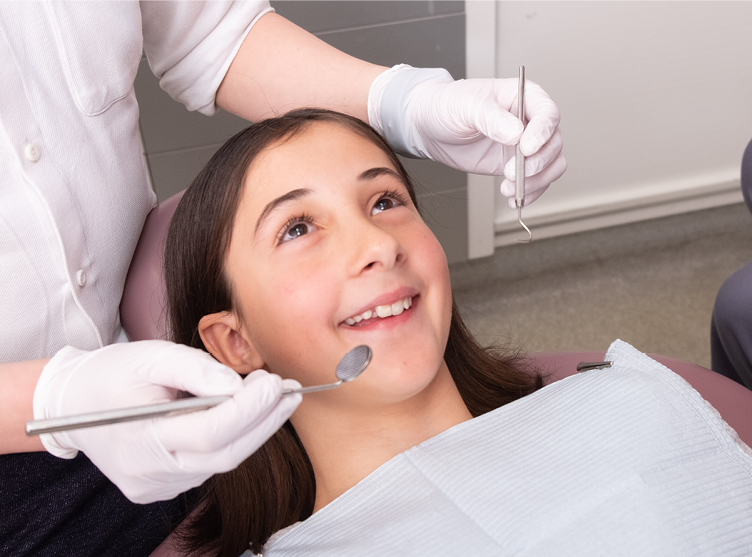Legacy Orthodontics - Truths
Legacy Orthodontics - Truths
Blog Article
All About Legacy Orthodontics
Table of ContentsLegacy Orthodontics - TruthsGetting The Legacy Orthodontics To WorkThe Definitive Guide for Legacy OrthodonticsThe Basic Principles Of Legacy Orthodontics The Main Principles Of Legacy Orthodontics
At Advanced Orthodontics, we provide patients with a all natural treatment experience. On top of that, we provide flexible therapy timetables, adaptable repayment alternatives and an enjoyable, enjoyable experience. leesburg orthodontics. Telephone call ( 480) 357-4900 today to find out more and schedule a consultation.An orthodontist is a dentist trained to detect, avoid, and treat teeth and jaw irregularities. Orthodontists work with people of all ages, from kids to adults.
Malocclusion, or misaligned teeth, can bring about oral problems, consisting of tooth decay, gum tissue illness, and hard or unpleasant eating. Not everybody is birthed with straight teeth. If you have a bad bite or large rooms between your teeth, you might wish to speak with a dental professional concentrating on orthodontic treatment.
Not known Factual Statements About Legacy Orthodontics
( Picture Debt: DigitalVision/Getty Images) Orthodontists utilize taken care of and removable dental tools, like braces, retainers, and bands, to transform the placement of teeth in your mouth. Orthodontic treatment is for oral problems, consisting of: Jagged teethBite problems, like an overbite or an underbiteCrowded teeth or teeth that are as well much apartJaw misalignmentThe objective of orthodontic treatment is to boost your bite.
A healthy and balanced bite guarantees you can consume, chew, and talk correctly. While you might consider orthodontists as mainly for youngsters or teens that need dental braces, they can fix dental troubles at any age. Orthodontists go to college, oral institution, and orthodontic institution. After graduation, they invest 2 or 3 years in an orthodontic residency program.
, yet not all dentists are orthodontists. They focus on two locations: How to properly and securely relocate teeth Just how to correctly assist advancement in the teeth, jaw, and faceOnce an orthodontist has actually completed training, they have the option to come to be board certified.
Our Legacy Orthodontics Ideas
Imbalance, or malocclusion, is one of the most usual reason individuals see an orthodontist. It is genetic and is the result of size differences between the upper and reduced jaw or between the jaw and teeth. Malocclusion results in tooth overcrowding, an askew jaw, or irregular bite patterns. Malocclusion is typically treated with: Your orthodontist connects steel, ceramic, or plastic square bonds to your teeth.
If you have just small malocclusion, you may be able to utilize clear braces, called aligners, instead of conventional dental braces (http://go.bubbl.us/e52862/86ae?/Legacy-Orthodontics). Some people need a headgear to assist move teeth into line with stress from outside the mouth. After braces or aligners, you'll need to wear a retainer. A retainer is a custom-made device that maintains your teeth in position.
They can produce additional area in the mouth without having to pull teeth. Orthodontists use cables, medical screws, or plates to sustain your jaw bone.
You might need to see an orthodontist if you have: Crowding or not sufficient room for every one of your teethOverbite, when your upper teeth come over your bottom teethUnderbite, when your bottom teeth are as well far forwardSpacing or problems with gapsCrossbite, which is when your top teeth fit behind your base teeth when your mouth is closedOpen bite or an upright void in between your front base and top teethMisplaced midline, when the facility of your base and top teeth don't align Fixing a dental malocclusion can: Make attacking, eating, and speaking easierImprove the proportion of our face and your overall appearanceEase pain from temporomandibular joint disordersSeparate your teeth and make them much easier to cleanse, helping protect against tooth decay or dental caries It's frequently a dental professional who first notices misaligned teeth during a regular test.
An Unbiased View of Legacy Orthodontics

During your initial orthodontic assessment, you'll likely have: An oral examPhotos taken of your face and smileDental X-raysPanoramic (360 degree) X-rays of your face and headImpressions to develop molds of your teethThese tests will certainly help your orthodontist know how to continue with your treatment. clear braces. An orthodontist is a dental expert that's had training to treat your teeth and jaw
Orthodontists may perform surgical treatment, exams,X-rays,and more to assist you achieve a more comfy, healthier smile. An orthodontist is concentrated on your bite, so something like a cracked tooth would certainly be taken care of by a dental practitioner. Orthodontists are dental experts yet not all dental practitioners are orthodontists. Orthodontists are concentrated on your bite, or the way your teeth fit with each other, and the straightness of your teeth.
Ever wondered just how stars constantly appear to have completely aligned teeth? Orthodontists are dental specialists that concentrate on dealing with irregularities in the teeth and jaws.
Legacy Orthodontics Fundamentals Explained

While braces are one of the most frequently identified orthodontic therapy, orthodontists have a diverse toolkit at their disposal. The specific technique chosen depends on the severity of the situation, the individual's age, and specific preferences. These tried-and-true braces utilize a system of braces bound to the teeth and linked by cords.
Clear aligners, like Invisalign, are a preferred alternative for patients seeking a much more discreet treatment alternative. These removable trays are customized to considerably change the teeth's placement. Headwear might be used along with dental braces or aligners to use extra targeted pressures, particularly for fixing jaw inconsistencies. In instances of slim jaws, palatal expanders can be used to create room for correct tooth positioning.
Report this page